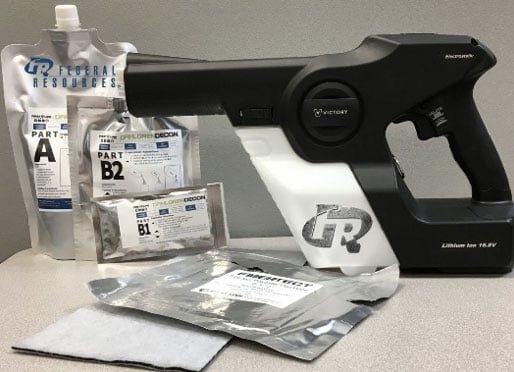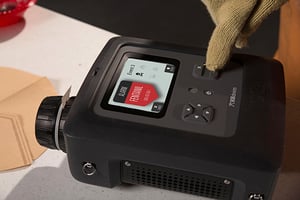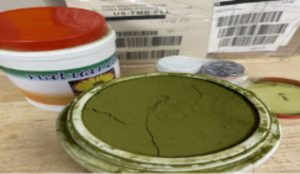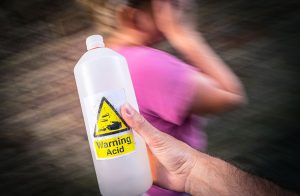By Christina Baxter, Emergency Response TIPS, LLC Mike Cashman and Gary Sharp, Federal Resources
As law enforcement agencies start to open to the post COVID environment, they should be prepared to get back to proper procedures when handling both drug and non-drug evidence. Before COVID arrived on the scene, law and emergency services dealt with the hazards related to Fentanyl and its analogs. We can not forget what we learned during those first days of the fentanyl epidemic. We have seen cross-contamination with Fentanyl laced items like the Coronavirus is quickly spread. Recently I utilized the MX908 and the BTNX strips to sample evidence processing stations for cross-contamination of the drugs.
I also utilized the MX908 trace detection to sample 4 separate evidence processing locations based on what I saw. The MX908 results were fascinating; they showed positive hits for Cocaine, Methamphetamine, MDMA, Fentanyl, Ephedrine, and other drugs. I went to a small police station and utilized the BTNX fentanyl strips; I had a positive Fentanyl hit on their scale. Both locations, large and small, had drug contamination on their evidence processing sites. Was there a chance of someone getting injured by this contamination? I doubt it, but what about cross-contamination? There exists an excellent opportunity for case evidence of cross-contamination. Cross-contamination could cause legal issues down the road for first responders. I have seen the BTNX strips swap the bottom of a fire truck evidence bag, which resulted in a positive hit for Fentanyl.
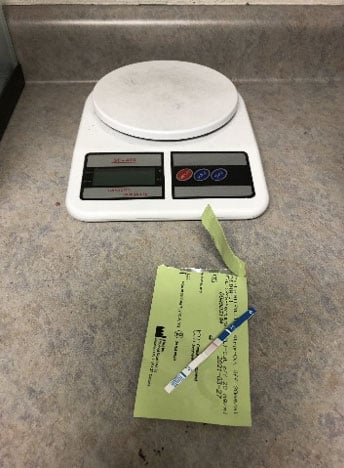 BTNX Strip, positive result for Fentanyl [/caption]
BTNX Strip, positive result for Fentanyl [/caption]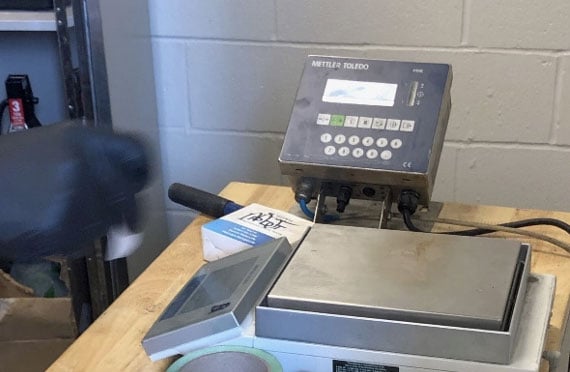 MX908 swab on the evidence processing station[/caption]
MX908 swab on the evidence processing station[/caption]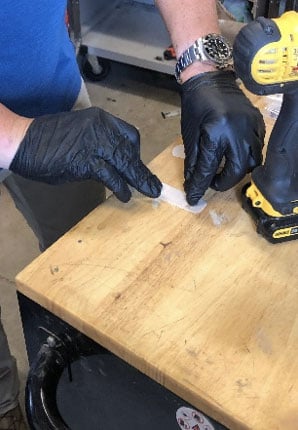 The sample being transferred[/caption]
The sample being transferred[/caption]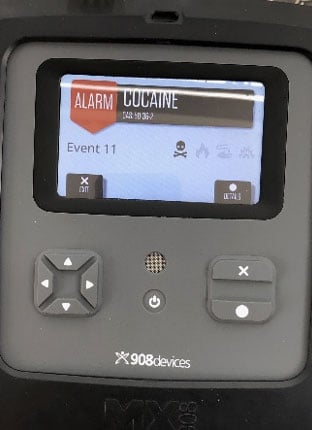 positive hit for Cocaine[/caption]
positive hit for Cocaine[/caption]Simple engineering controls should be used to alleviate the chance of cross-contamination. The utilization of a glove box, or a hood with a HEPA filter attachment, helps many cross-contamination issues. They should incorporate standard procedures in the evidence processing SOP’s. These procedures include utilizing printer paper or butcher paper on processing surfaces and scales. When the sample is processed, dispose of the paper and start fresh with new clean paper. One significant step in the proper cleaning of your processing location is to include scales. To do this, the agency should utilize a cleaning solution that will neutralize Fentanyl and other drugs. A decontamination solution such as DAHLGREN Decon solution applied with a Victory EDK sprayer will accomplish this. There are different types of Decon solutions and detection devices available to help your agency protect your employees.
Learn More
